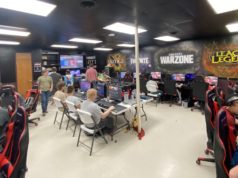Minorities make up a small fraction of every level of government. According to a 2014 study by Women Donors Network, “Just 10 percent of officeholders are people of color, despite representing more than 37 percent of the population.”
Diverse views strengthen public policy, but various social factors prevent minorities from seeking public office. The factors limiting political engagement among minority populations include a lack of clearly defined public policy among Republicans and Democrats coupled with a lack of political interest within certain minority communities.
A failure of both parties
Without a clear public policy aimed at engaging minorities within the two parties, diversity in politics is seriously hindered. The problem highlights a missing commitment to resources and financial incentives geared toward creating community liaisons and training opportunities locally and at the federal level. Most state parties lack the finances to provide mentoring opportunities, even though minorities make up a large portion of their constituency.
This lack of diverse representation promotes an unfair public balance that harms the core of minority communities eager to establish their presence as part of the American culture. As a result, these communities exhibit low voter turnout and apathy toward civic engagement in local policies.
A lack of political will within the parties and the absence of a concerted platform deters future minority candidates from seeking office. Additionally, during elections, major political parties are far less likely to contact minority candidates compared to their white counterparts. This further disenfranchises the candidates from getting engaged and deters participation in the political process.
A cycle of apathy
In one particular Oklahoma district, only 450 of 4,000 registered Democrats voted for a Latino running in a 2014 primary. That was in a predominantly Latino district that features many issues pertaining to immigration and education.
By comparison, states like Texas and California have successfully elected Latino and Asian representatives and have ensured successes in widespread education and health reforms. These states have also witnessed a more positive attitude toward immigration and public services.
The disconnect between minority communities and political representation discourages minority candidates from competing in local races owing to a lack of community support. Removing their voice from the political process further places minorities at a social disadvantage.
Minority populations increasing
All of this is ongoing even as minority populations in the United States have increased from 33 percent in 2004 to 38 percent in 2014. Estimates show the numbers will continue to rise. This is especially true among millennials, who are 44 percent minority.
As a result, it is pertinent to invest in and engage with minorities who are slowly becoming an integral segment of the voting block.






















